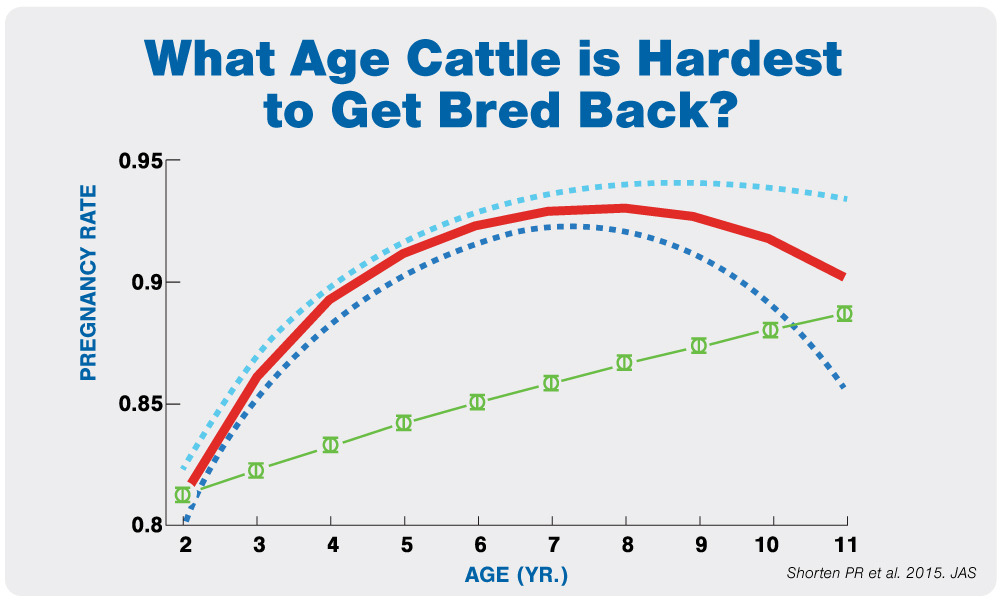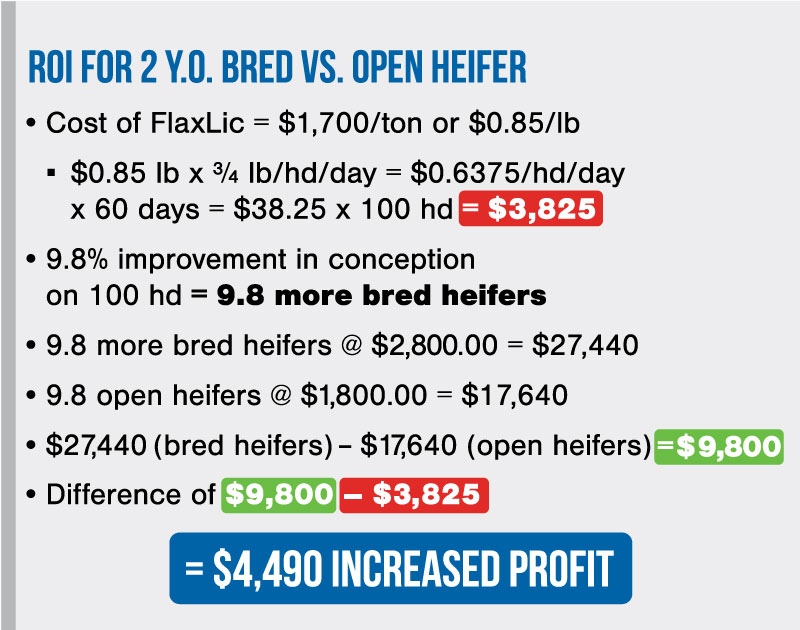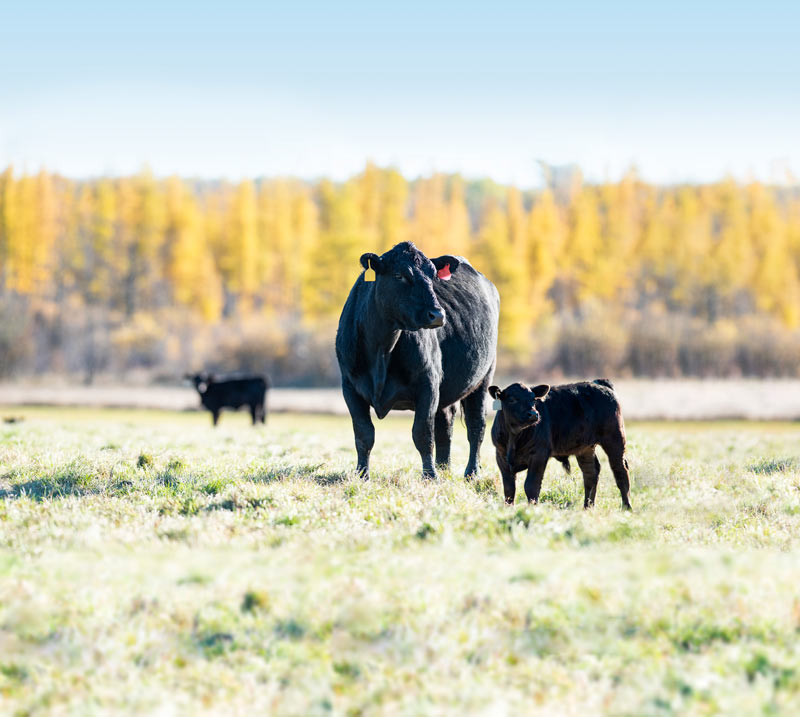How Many, How Soon?
For the rancher, getting cows bred in the first cycle has a huge impact on profitability. That calf is, on average, 18-21 days older than its pair-mate born in the second cycle which will ultimately mean higher profitability. It often takes longer for a 2- or 3-year-old to be bred compared to a more mature cow. This may be due to several factors such as continued growth and development. In this field demonstration we will show that feeding FlaxLic can shorten the open days, upping ranchers’ profit potential.

On-Ranch Field Demonstration
New Generation Supplements performed an on-ranch field demonstration composed of 238 Herford/Angus cross cattle to identify some key benefits of feeding FlaxLic in regard to reproduction. We will compare these supplemented cattle to the 23,000 other cattle the veterinarian(s) pregnancy checked in the area. In this demonstration, FlaxLic was fed to developing heifers, first-calf heifers, and 3-year old cows. The chart below illustrates the positive reproductive performance gap created by feeding FlaxLic on our ranch field demonstration. All groups showed improvement through supplementation to meet animal needs while younger females supplemented with FlaxLic showed significantly greater improvements through meeting not only basal needs but providing essential fatty acids to improve conception and limit early embryonic loss. While still a significant increase, there were several environmental factors, including a very high starting plane of nutrition, that contributed to the lower improvement level with bred heifers.
The mature cows were supplemented with a balanced NGS LMB program and bred by bulls supplemented with FlaxLic. Click here to read more about the impact of FlaxLic on bull performance.
DVM: Results on 23,000 Hd/ Preg Tested (% Open)
| Cow’s Age | Bred Heifers | 2 Year Old | 3 Year Old | 4 – 8 Year Old |
|---|---|---|---|---|
| FlaxLic Ranch Trial | 13% | 6.5% | 7.6% | 4.4% |
| Control Group | 16% | 16.3% | 14% | 6% |
| % Difference | 3% | 9.8% | 6.4% | 1.6% |
We use this hard data combined with best practices for feeding FlaxLic plus current average market prices to illustrate the following return on investment example:
TWO ROI ILLUSTRATIONS BASED ON RANCH DATA



What is the Value of Getting Cows Bred Back Earlier in the Season?
Progressive ranchers target 75 – 80% pregnancy rate in the first cycle. While an excellent goal, there are a lot of obstacles standing in the way. Feeding FlaxLic can help overcome some of these, particularly with herds facing nutritional challenges or imbalances of omega-3 to omega-6 or omega-9. We have already seen how FlaxLic can help more heifers and young cows get bred during their first cycle. Having that calf early means higher gains and a greater potential return on your investment of FlaxLic. The chart below is an illustration of how a positive return can be realized and what the losses could be as calves slip to the second or third periods.
Impact of Calving Date on Profitability
Through Weaning > Economics
| Calving Period 1 | Calving Period 2 | Calving Period 3 | |
|---|---|---|---|
| Age at Weaning, d | 205 | 189 | 166 |
| Calf Weaning wt, lb | 515 | 483 | 435 |
| Sale Price, $300 cwt | $1,545 | $1,449 | $1,305 |
| Difference 1 vs. 2 & 3, $ | $96 | $240 | |
| Difference 2 vs. 3 | $144 | ||
| $ per extra day of age: | |||
| Period 1 vs. 2 | $6.00/day | ||
| Period 2 vs. 3 | $6.26/day |
The Bottom Line
- Moving cattle from the 2nd or 3rd cycle to the first cycle can have a major impact on calf uniformity and pounds of beef sold.
- Omega-3 must be supplemented to achieve optimal reproduction performance in both male and female supplying essential fatty acids commonly lacking from pasture diets.
- FlaxLic provides many additional benefits. Omega-3 serves as an anti-inflammatory. FlaxLic improves overall health and immune response and enhances the appearance of hair coat.


